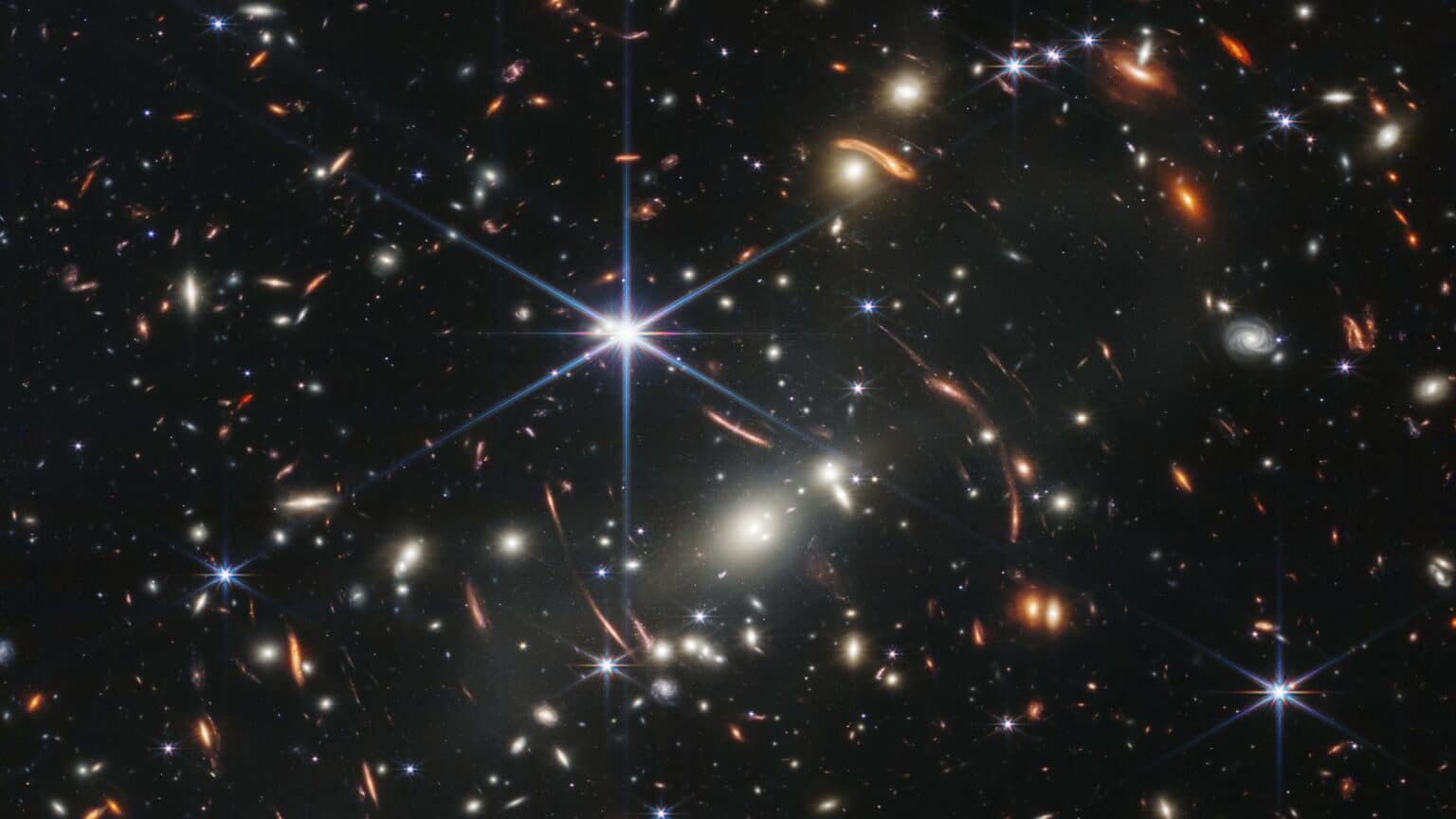According to NASA, Webb’s first stunning image, of sparkler galaxy is “the deepest and sharpest infrared image of the distant universe to date.”
In Sparkler Galaxy SMACS 0723, a massive cluster of galaxy clusters serves as a magnifying glass for the objects behind them, as shown in Webb’s first image.
This, known as gravitational lensing, resulted in Webb’s first deep field view of extremely old and faint galaxies. Long-distance observations of sky regions that may reveal faint objects are known as deep field observations. the first image that was taken by the James Webb Space Telescope shows some of the oldest stars and galaxies in the universe, including one that looks like a sparkler.
There are a few of these far-off galaxies and star clusters that have never been seen before. The galaxy cluster as it existed 4.6 billion years ago is depicted.
Although the surrounding objects that gave rise to the nickname are of particular scientific interest because they may be the most distant globular clusters of stars ever discovered by astronomers, the galaxy itself is remarkable for its strangely stretched appearance.
Globular clusters are collections of old stars from when a galaxy was just starting. Because of this, they can tell us about the early stages of the galaxy’s growth, development, and formation. The Canadian NIRISS Unbiased Cluster Survey (CANUCS) team discovered that five of the 12 compact objects surrounding the Sparkler Galaxy are, in fact, globular clusters. In addition, they may be some of the oldest globular clusters ever observed, possibly dating back to the time when stars first appeared in the universe.
According to Iyer, the team was able to observe the “sparkles” across a variety of wavelengths thanks to the JWST image. As a result, the researchers were able to precisely model the clusters to gain a better understanding of their physical properties, such as their age and the number of stars they contain. Before JWST, it was impossible to use such distant globular clusters to date the first stars in distant early galaxies.
Both the Hubble Space Telescope, which had previously observed the galaxy but was unable to resolve the globular clusters surrounding it, and a natural phenomenon known as gravitational lensing contributed to the JWST’s ability to observe the Sparkler Galaxy.















